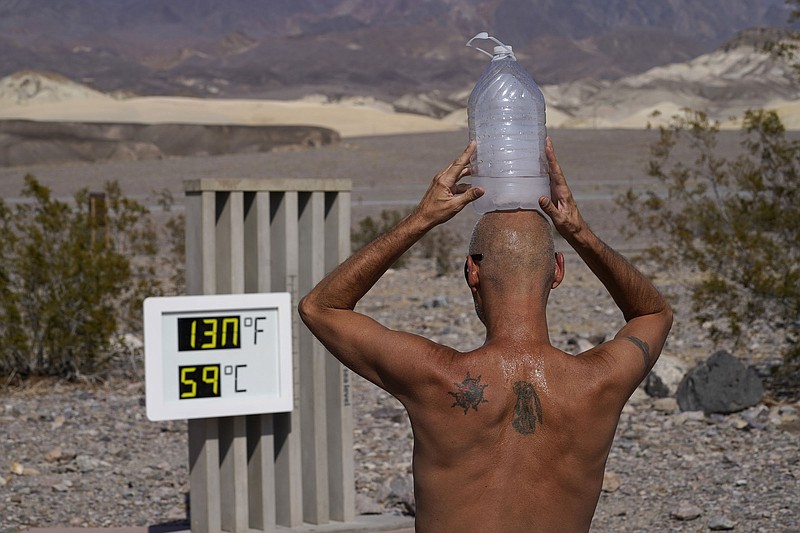California sizzled to a triple-digit temperature so hot that meteorologists need to verify it as a planetwide high mark.
Death Valley recorded a scorching 130 degrees Sunday, which if the sensors and other conditions check out, would be the hottest Earth has been in more than 89 years and the third-warmest ever measured.
The temperature, measured at the aptly-named Furnace Creek during a blistering heat wave, would be the hottest temperature recorded on Earth in August, said Arizona State University professor Randy Cerveny, who coordinates the World Meteorological Organization's extreme temperature team, which is already investigating the mark.
[Video not showing up above? Click here to watch » https://www.youtube.com/watch?v=5EOJroj9I54]
That 130 is only below the disputed all-time record of 134 degrees at nearly the same spot in 1913 and a 131-degree mark in Tunisia in 1931, but both were in July, traditionally the planet's hottest month.
The relentlessly hot weather conditions at the spot support such an extreme reading, so much of the verification effort will be looking at how the measurement was taken and the sensor itself, Cerveny said. Sunday's temperature would beat marks of 129 recorded three times in recent years, he said. The monitor is an official one that follows world guidelines, but still needs to be examined in a process that takes months, he said.
"We are having more extremes than we had in the past," Cerveny said.
The world is "creeping up on [the 134-degree record] year after year. That is something that cannot be denied," Cerveny said Monday. "These extremes tell us a lot about what will happen in the future."
The western heat wave is a result of a "massive dome of high pressure" that keeps roasting the West and the normal Southwest monsoon that would provide rain and relief is missing, so there has been no cooling, Cerveny said. Phoenix has gone weeks with temperatures not dipping below 90, even at night or early in the morning, he said.
The 130-mark capped a week and an ongoing summer of "very strange" weather, said Deke Arndt, director of the National Weather Service's Center for Weather and Climate and former chairman of the U.S. national weather extremes committee.
[Gallery not loading above? Click here for more photos » arkansasonline.com/819record/]
On Saturday, a fire tornado formed during a wildfire near Chilcoot, Calif., worsened by the western heat wave. The fire was "burning so incredibly intense, so there is just so much heat going into it" that air rose in a swirl just like what happens in some thunderstorms, said Dawn Johnson, senior meteorologist at the National Weather Service office in Reno, Nevada. "It almost looks like a bomb went off."
And days before that, a violent straight-wind derecho devastated parts of Iowa, Illinois and Indiana, killing four people and causing billions of dollars in damages.
Also, the Atlantic region keeps setting records for earliest hurricanes, with 11 forming before mid-August and the beginning of peak season.
Information for this article was contributed by John Antczak of The Associated Press.




